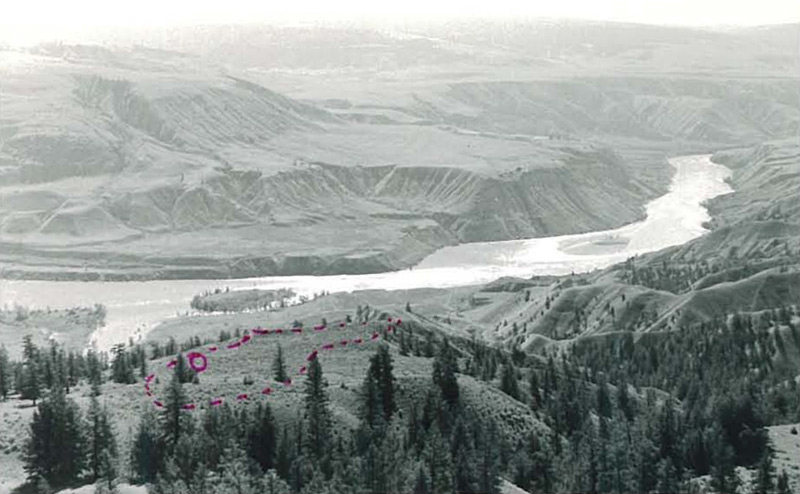By Grant Keddie. 1978.
Introduction:
The Chilcotin Archaeological and Ecological Survey Project was initially proposed by Paul Sneed of the University of B.C. The project was to be part of a long term program utilizing the latest, as well as new experimental methods, in the regional approach to cultural ecology.
As a result of a brief reconnaissance to the lower Chilcotin River area during the summer of 1970 by Mr. Sneed and the author, it was decided that this region – heavily utilized in prehistoric times, was in need of an information recovery project before it was engulfed by the energies of modern man. A major threat to the area involved the construction of the proposed Moran Dam, seventy river miles downstream from the mouth of the Chilcotin River. The proposed dam reservoir would destroy all sites less than feet above the river and endanger others in close proximity to the reservoir. A secondary threat to the area was the paving of a highway from William’s Lake to Riske Creek. This would greatly increase the influx of perspective ”pot hunters”, was well as general human activity which may endanger sites in the area. Logging, mining and ranching activities have already damaged several sites, and the activity of “pot hunters” is evident at a number of locations.
